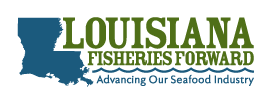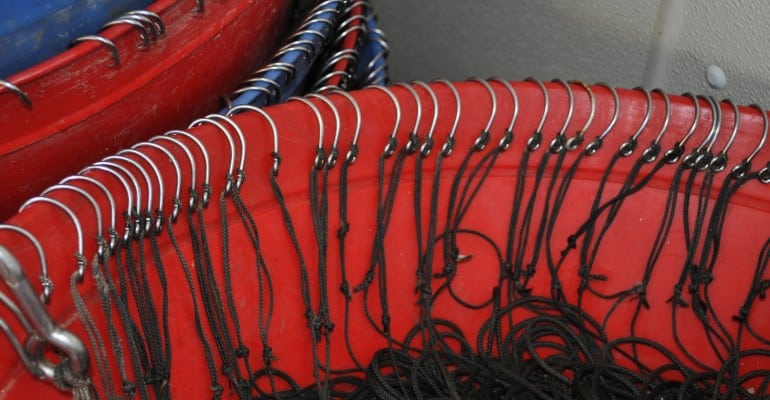The Gulf of Mexico Fishery Management Council met in Birmingham, Alabama, April 3 – 6, 2017, to discuss a number of fishery issues. The following is a summary of the Council’s actions:
Red Snapper
National Marine Fisheris Service (NMFS) can not produce final 2017 federal recreational season length projections until after the Gulf States have set their state water seasons. This year, 77%-79% of the private angler annual catch target is expected to be harvested within the state water seasons, and NMFS will set the federal season based on the remainder. NMFS has committed to announcing the 2017 federal private and for-hire red snapper seasons by May 1, at the latest.
A recent court decision overturned Reef Fish Amendment 28, which shifted the red snapper allocation from the historical 51% commercial and 49% recreational to 48.5% commercial and 51.5% recreational. The allocation shift in Amendment 28 was a result of recalibration of recreational landings data to the recreational sector. Consequently, the red snapper allocation will revert back to the historical level. The Council decided to begin exploring other mechanisms to reallocate red snapper at the June meeting.
The Council decided to initiate a framework action that considers adjusting the buffer that sets the recreational red snapper annual catch target at 20% below the annual catch limit. That buffer was put in to place as an in-season accountability measure to decrease the probability that landings exceed the quota.
The Council voted to begin developing amendments that consider allowing Louisiana, Mississippi, and Alabama to manage their harvest of recreational red snapper out to 200 nautical miles. Each state would be allotted their historical percentage of the gulf-wide recreational harvest, and the program would be considered for the years 2019-2021.
Advisory Panel Nominations
The Council reviewed candidates and selected potential members for the Red Drum Advisory Panel and Coastal Migratory Pelagics Advisory Panel. The Council will perform background checks on nominees and is expected to finalize membership at the June Council meeting.
Coral
The Council reviewed the summary of comments from the scoping workshops conducted on Coral Amendment 7, which considers designating protections for 15 priority deep-water coral areas in the Gulf of Mexico. The Council decided to move forward to develop an options paper for Coral Amendment 7, and initiate a new coral amendment that would address the remaining areas proposed by the coral scientists that are not included in Coral Amendment 7.
Discard Mortality
In order to consider ways to reduce the number of fish that die upon release. The Council initiated an action that will consider requiring anglers possessing reef fish to have descending devices or venting tools onboard their vessels.
Acceptable Biological Catch (ABC) Control Rule
Acceptable Biological Catch is the level of annual catch that accounts for scientific uncertainty in the estimate of the overfishing limit. Stocks and stock complexes are required to have an ABC, and the Council is considering modifications to the ABC control rule for Reef Fish, Red Drum, Coastal Migratory Pelagics, Coral, Spiny Lobster, and Shrimp Fishery Management Plans. The Council will review a revised draft of the amendment at a future Council meeting.
Modifications to Commercial IFQ Programs
The Council took final action on Reef Fish Amendment 36A, which addresses modifications to the commercial IFQ programs. After hearing a summary of public comments received on Amendment 36A, the Council chose to require all reef fish permitted vessels landing federally managed reef fish to hail-in at least 3 hours, but no more than 24 hours before landing. The Council deferred taking final action on returning non-activated IFQ shares to NMFS and intends to address how to redistribute those shares in Reef Fish Amendment 36B, which is in the beginning stages of development. The Council also chose not to add additional dealer notification requirements to offload IFQ species. Reef Fish Amendment 36A will be transmitted to the Secretary of Commerce for approval and implementation.
Gray Triggerfish Rebuilding Plan
After hearing a summary of comments received during public hearings, the Council took final action on Reef Fish Amendment 46, which modifies the gray triggerfish rebuilding plan. The Council chose to establish a 9-year rebuilding timeline; retain the current annual catch limits and annual catch targets; add a January and February recreational closed season in addition to the current June and July closure; reduce the recreational bag limit to 1-fish per person per day; increase the recreational minimum size limit to 15-inches fork length; and increase the commercial trip limit to 16-fish. The Amendment will be transmitted to the Secretary of Commerce for approval and implementation.
Mutton Snapper and Gag
The Council reviewed public comments and took final action on the Framework Action that considers modifying mutton snapper and gag management measures. The mutton snapper stock occurs in both the Gulf and South Atlantic jurisdictions and the Gulf is apportioned 18% of the stock acceptable biological catch (ABC). The Council decided to set the annual catch limit at the Gulf apportionment of ABC; remove the annual catch target; establish a 5-fish per person bag limit within the 10-snapper aggregate limit; and increase the commercial and recreational minimum mutton snapper size limit to 18 inches total length. The Council also decided to increase the gag commercial minimum size limit to 24 inches total length in order to match the recreational minimum size limit. These actions make the Gulf regulations for mutton snapper and gag more compatible with those of the South Atlantic which is something that has been long requested by the fishermen in the Florida Keys. The Framework Action will be transmitted to the Secretary of Commerce for approval and implementation.
Greater Amberjack
The Council received a report from its Scientific and Statistical Committee on the greater amberjack update stock assessment that determined the greater amberjack stock continues to be overfished and is continuing to experience overfishing, and is not making adequate progress towards rebuilding. The Council heard a summary of comments received before reviewing a draft Options Paper that considers adjusting the greater amberjack rebuilding plan and annual catch limits and annual catch targets. The Council directed staff to add alternatives that consider adjusting commercial and recreational seasons and size limits. The Council will continue to solicit public comments before taking final action.
Vermilion Snapper
The Council reviewed a draft of Amendment 47, which considers modifying vermilion snapper annual catch limits and the proxies used to define maximum sustainable yield. The Council modified the range of alternatives, set the proxy as the yield corresponding to 30% SPR, and set the stock ACL at 3.11 million pounds whole weight (commercial and recreational harvest combined) The Council plans to host a public hearing via webinar before the June Council meeting.
Longline Hook Limitations
A current rule allows longliners to have up to 750 hooks rigged for fishing, and no more than 1000 hooks onboard total. After hearing public testimony, the Council decided to develop a document that considers allowing longliners to carry any number of unrigged hooks as long as no more than 750 are rigged for fishing.
For-Hire Management
The Council selected to add gag, gray triggerfish, greater amberjack, and red grouper to Reef Fish Amendment 41, which originally considered only red snapper management for federally permitted charter vessels. The Council also decided to consider methods of cyclical redistribution of red snapper and the other species within the program. At the June meeting, the Council will address both Reef Fish Amendment 41 – Charter Vessel Red Snapper Management and Reef Fish Amendment 42 – Reef Fish Headboat Management.
Spiny Lobster
The Council reviewed updates to the draft of Regulatory Amendment 4, which considers modifying the definitions for maximum sustainable yield and maximum fishing mortality threshold; increasing the annual catch limit and annual catch target; and prohibiting the use of recreational traps in the federal waters of the South Atlantic. The Council will solicit comments online before taking final action in June.
Shrimp
The Council approved the annual Texas shrimp closure for 2017. The closure is part of a cooperative seasonal closure with the State of Texas and runs concurrent with its mid-season closure. The shrimp fishery is closed annually off Texas to allow brown shrimp to reach a larger and more valuable size prior to harvest and to prevent waste of brown shrimp that might otherwise be discarded because of their small size.
The Council took final action on Shrimp Amendment 17B. The Council selected an aggregate maximum sustainable yield (112,531,374 pounds of tails) and an aggregate optimum yield (85,761,596 pounds of tails). The Council also set a minimum threshold of 1072 active shrimp permits. The Council will convene a review panel to review the details of a permit pool if the number of permits reaches 1,300 permits. The Council also decided to allow vessels possessing shrimp to transit federal waters without a federal permit if their trawl doors and nets are out of the water and bag straps are removed. The amendment will be transmitted to the Secretary of Commerce for approval and implementation.
About the Gulf of Mexico Fishery Management Council
The Gulf of Mexico Fishery Management Council is one of eight regional Fishery Management Councils established by the Fishery Conservation and Management Act of 1976. The Council prepares fishery management plans which are designed to manage fishery resources within the 200-mile limit of the Gulf of Mexico.
Submit comments and stay updated on fishery issues:
Check it out! Go to www.gulfcouncil.org and click on the thermometer in the middle of the page. From there you can read up on all the pending actions, watch the video presentations, read comments, and submit comments. All comments submitted through the online form are automatically posted on our web site for Council review. Other comments are manually posted every couple of days.
There is also a thermometer for each issue that lets you know where the Council is in the process for that particular amendment, whether it’s the scoping phase, final action, or implementation.





